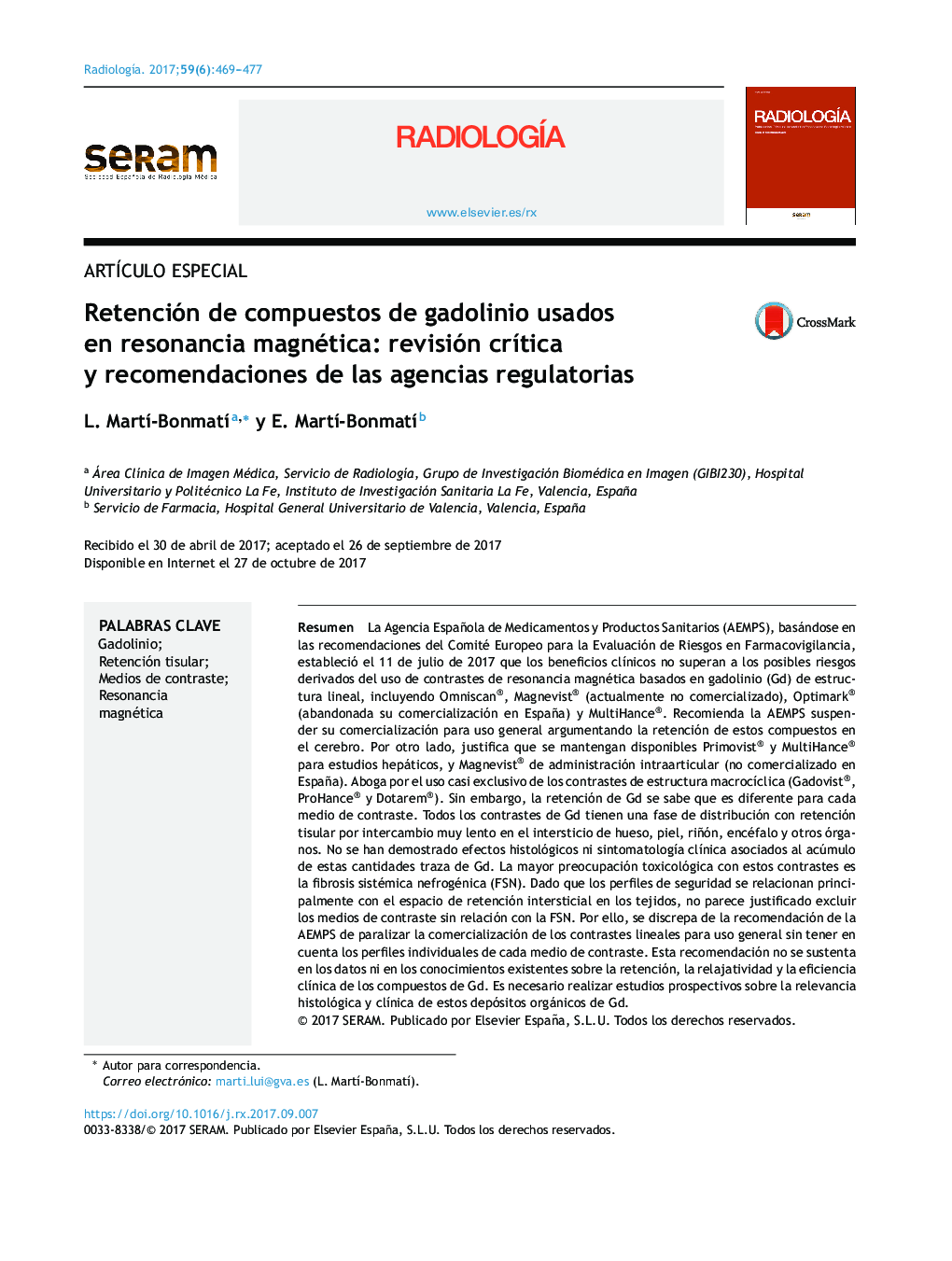| Article ID | Journal | Published Year | Pages | File Type |
|---|---|---|---|---|
| 8824747 | Radiología | 2017 | 9 Pages |
Abstract
The Spanish Agency for Drugs and Healthcare Products (AEMPS), based on the recommendations of the European Committee for Risk Assessment in Pharmacovigilance, established on 13 March 2017 that linear gadolinium-based MR contrast media, such as MultiHance, Omniscan, Magnevist (currently not marketed) and Optimark (no longer marketed in Spain), the clinical benefits do not outweigh the potential risks derived from their use. AEMPS recommends to suspend its marketing for general use based on the retention of these compounds in the brain. On the other hand, the AEMPS justifies the maintenance of Primovist and MultiHance for liver studies, and Magnevist of intra-articular administration (not commercialized in Spain), and justified the almost exclusive use of macrocyclic structure contrasts (Gadovist, ProHance and Dotarem). However, this retention is known to be different for each of the contrast media. All existing gadolinium contrasts agents have a distribution phase with tissue retention, due to a very slow exchange, in the interstitium of bone, skin, kidney, brain and other organs. The existence of histological effects or clinical symptoms associated with the accumulation of these trace amounts of gadolinium has not been demonstrated. The major toxicological concern with these contrast agents is related to nephrogenic systemic fibrosis (NSF). Since the safety profiles are mainly related to the interstitial retention space in the tissues, it does not seem justified to actually exclude contrast media that do not have cases related to the NSF. Based on all of this, we disagree with the latest AEMPS recommendation suggesting the marketing stoppage of linear agents without considering the individual retention profiles. This recommendation is not based neither on the data nor existing knowledge about the retention, relaxivity and clinical efficiency of the Gd compounds. It is therefore necessary to carry out prospective studies on the histological and clinical relevance of these organic Gd deposits.
Keywords
Related Topics
Health Sciences
Medicine and Dentistry
Radiology and Imaging
Authors
L. MartÃ-BonmatÃ, E. MartÃ-BonmatÃ,
